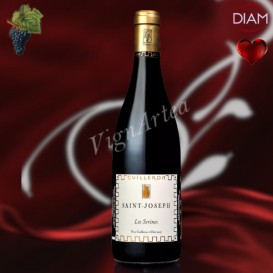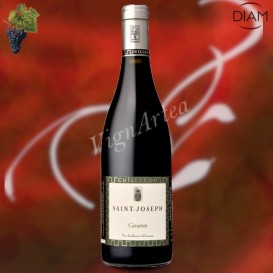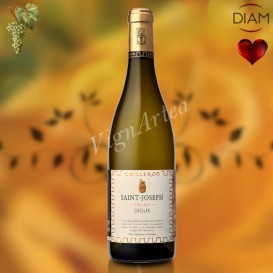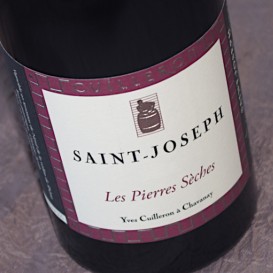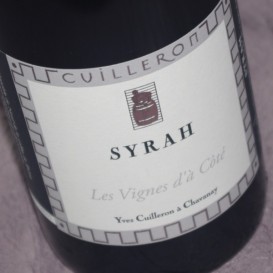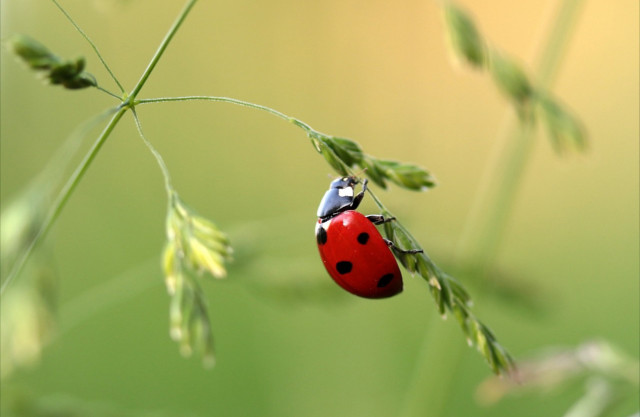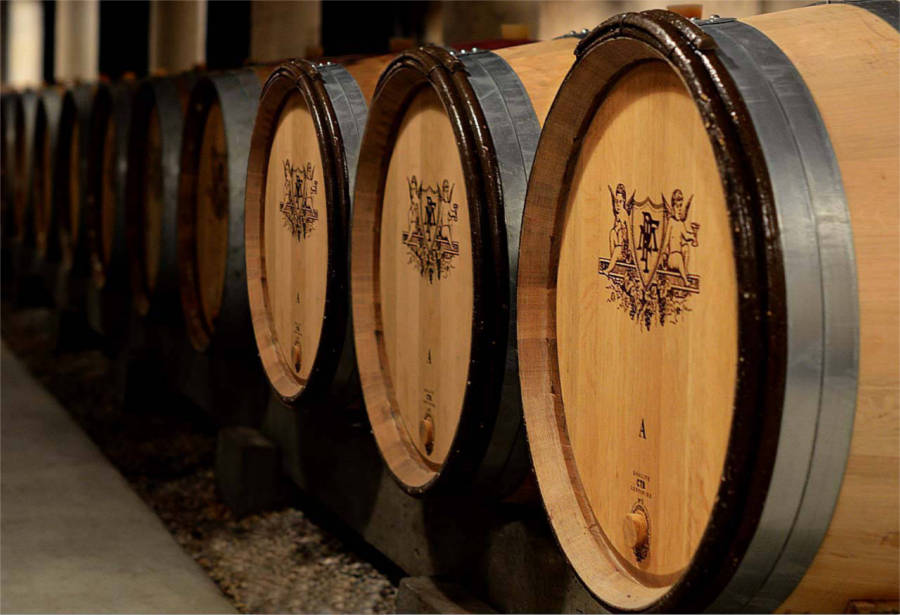Domaine Yves CUILLERON

RHÔNE VALLEY 70 ha SUSTAINABLE AGRICULTURE WINEMAKER : Yves CUILLERON
ESTATE HISTORY
The Domaine Yves Cuilleron, located in Chavanay, runs 70 hectares of vineyards spread over 5 designations : Côte-Rôtie, Condrieu, Saint-Joseph, Saint-Péray and Cornas. It also produces wines under Crozes-Hermitage's designation for which the winemaker buys the grapes.
The winemaker Yves Cuilleron is particularly proud in having given back to the Condrieu et Côte-Rôtie vineyards their fame : the extreme slopes roughness made the work so difficult without any mechanization, that the vineyard had been gradually abandoned during the previous century.
WINEGROWING AND WINEMAKING
In the vineyard, Yves Cuilleron pays particular attention to the vegetative cycle, practicing leaf removal and green harvest that allows a maximum aeration of the bunches and thus a decrease in their diseases sensitivity. Viticulture is made according the sustainable cultivation methods, the chemicals treatments are reduced to the maximum, no insecticide is used. As he says himself, his philosophy is to "produce the most beautiful grapes as possible" for wines that have a soul, and it begins with the first vineyard's work.
In the cellar, manually harvested grapes are sorted carefully, alcoholic fermentations take place with the native yeasts, without any oenological products addition, and under temperature control.
For white wines, the grapes are pressed, the juice is decanted after a 24 hours settling, and the alcoholic and malolactic fermentations take place directly in barrels. The must is then aged on lees for 9 months with regular stirring. The juice is then slightly filtered before bottling.
For the red wines, the manual harvest is partially destalked, and the alcoholic fermentation takes place in open vats for about three weeks with regular punchings. The ageing occurs in barrels for 18 months. The juice is not filtered but fined with egg white before bottling.
In order to produce wines identified by their terroir, the vinification is separated : the old vines grapes are vinified on one side, the young vines grapes on the other side, and the plots grapes apart. It is only at the end of the vinification process that the blend of the different vats takes place - or not -, after tasting and according to the principle of "a wine-a style".
-
LES SERINES 2022 (Yves CUILLERON)
45,00 € In stock!RHÔNE VALLEY - AOP SAINT-JOSEPH - RED WINE
Grape variety: Serine (100%)
Native yeasts DIAM30® cork stopper
Ageing in oak barrels for 18 monthsTasty - Fruity
- Nose: open and generous. Notes of red and black fruits, with a hint of sweet spices and chocolate.
- Palate: fruity and full-bodied. Fine tannins. Long black cherry finish.
- Tasting date: May 2025 (3-hour decanting)
- OUR OPINION: a very fine vintage! Tasty and fruity, it's ready to drink after decanting, while offering an excellent cellar-ageing potential. A real favorite! ❤️❤️
Other vintage available:
- Nose: open and generous. Notes of red and black fruits, with a hint of sweet spices and chocolate.
-
SAINT-JOSEPH LYSERAS 2023 (Yves CUILLERON)
26,00 € In stock!RHÔNE VALLEY - AOP SAINT-JOSEPH - DRY WHITE WINE
Grape varieties: Marsanne (50%) - Roussanne (50%)
Native yeasts DIAM10® cork
Ageing on fine lees for 9 months in oak barrels- Nose: tasting ongoing
- Palate: tasting ongoing
- Tasting date:
- OUR OPINION:
Other vintage available:
- Nose: tasting ongoing
-
SAINT-JOSEPH CAVANOS 2022 (Yves CUILLERON)
29,90 € In stock!RHÔNE VALLEY - AOP SAINT-JOSEPH - RED WINE
Grape variety: Syrah (100%)
Native yeasts DIAM10® cork stopper
Ageing for 16 months in oak barrelsRich - Fruity
- Nose: generous and slightly minty. Delicious notes of blackberry and bilberry.
- Palate: sfruity and structured by very fine tannins.
- Tasting date: May 2025.
- OUR OPINION: a successful, predominantly fruity vintage. Still young, it can be drunk now after decanting. Good ageing potential.
- Nose: generous and slightly minty. Delicious notes of blackberry and bilberry.
-
VIOGNIER LES VIGNES D'À CÔTÉ 2023 (Yves CUILLERON)
19,95 € In stock!RHÔNE VALLEY - IGP COLLINES RHODANIENNES - DRY WHITE WINE
Grape variety: Viognier (100%)
Native yeasts DIAM10® cork
Ageing on fine lees for 7 monthsFruity - Fresh - Tasty
- Nose: open and juicy. Intense notes of peach, pear and passion fruit.
- Palate: round, tonic and fruity.
- Tasting date: May 2025
- OUR OPINION: a lovely little Viognier, fresh and generously perfumed! A real favorite! ❤️❤️
- Nose: open and juicy. Intense notes of peach, pear and passion fruit.
-
CÔTE-RÔTIE BASSENON 2023 (Yves CUILLERON)
63,95 € In stock!RHÔNE VALLEY - AOP CÔTE-RÔTIE - RED WINE
Grape varieties: Syrah (90%) - Viognier (10%)
Native yeasts DIAM30® cork stopper
Ageing in oak barrels for 18 monthsRich - Tasty - Full-bodied
- Nose: generous and delicious. Balsamic notes, juicy black fruit, cherry and prune.
- Palate: fresh and juicy. Tannic structure still a little tight. Long black cherry finish.
- Tasting date: May 2025, after 6 hours decanting.
- OUR OPINION: a fine vintage, dense and extremely promising, which should be left to mature in the cellar until at least 2030.
- Nose: generous and delicious. Balsamic notes, juicy black fruit, cherry and prune.
-
RIPA SINISTRA 2023 (Yves CUILLERON)
47,50 € In stock!RHÔNE VALLEY - IGP COLLINES RHODANIENNES - RED WINE
Grape variety: Syrah (100%)
Native yeasts
Ageing for 18 months in oak barrels- Nose: intense and rich. Concentrate notes of black fruits dominated by blueberries and blackberries, wrapped with elegant peppery notes, aromas of dark chocolate with a hint of liquorice.
- Palate: Beautiful juice on the palate, rich and silky, generously fruity and elegant.
- Tasting date: tasting notes of the 2017 vintage.
- OUR OPINION: the tiny quantities supplied do not allow me to sacrifice a bottle for tasting. As those wines are of impeccable quality year after year, I wrote the tasting notes of the 2017 vintage as an indication.
- Nose: intense and rich. Concentrate notes of black fruits dominated by blueberries and blackberries, wrapped with elegant peppery notes, aromas of dark chocolate with a hint of liquorice.
-
SAINT-JOSEPH LIEU-DIT DIGUE 2023 (Yves CUILLERON)
35,00 € In stock!RHÔNE VALLEY - AOP SAINT-JOSEPH - DRY WHITE WINE
Grape variety: Roussanne (100%)
Native yeasts DIAM30® cork
Ageing on fine lees for 9 months in oak barrelsRich - Fruity - Ample
- Nose: intensely fragrant. Notes of yellow peaches, passion fruit and lychees
- Palate: invigorating, tasty and aromatic. Long aromatic persistence
- Tasting date: July 2025
- OUR OPINION: 2023 is a rich, complex, intensely fruity vintage. Beautiful balance between roundness and tension on the palate! ❤️❤️
- Nose: intensely fragrant. Notes of yellow peaches, passion fruit and lychees
-
LES PIERRES SECHES 2021 (Yves CUILLERON)
24,70 € In stock!RHÔNE VALLEY - AOP SAINT-JOSEPH - RED WINE
Grape variety: Syrah (100%)
Native yeasts DIAM10® cork stopper
Ageing for 18 months in oak barrels- Nose: tasty and vanilla-flavoured. Notes of red and black fruit with a hint of vanilla and cinnamon.
- Palate: round and fluid.
- Tasting date: November 2023.
- OUR OPINION: a rather discreet and fruity vintage. It is less full-bodied than the previous vintages and more suited to lovers of light wines.
- Nose: tasty and vanilla-flavoured. Notes of red and black fruit with a hint of vanilla and cinnamon.
-
SYRAH LES VIGNES D'À CÔTÉ 2022 (Yves CUILLERON)
12,90 € In stock!RHÔNE VALLEY - IGP COLLINES RHODANIENNES - RED WINE
Grape variety: Syrah (100%)
Native yeasts DIAM3® cork stopper
Ageing for 7 months in oak barrels and tanks- Nose: intense and delicious. Notes of black fruit and spices.
- Palate: supple, silky and fruity.
- Tasting date: November 2023.
- OUR OPINION: a fresh and delicious vintage, very good!
- Nose: intense and delicious. Notes of black fruit and spices.
-
LABAYA 2021 (Yves CUILLERON)
23,50 € In stock!RHÔNE VALLEY - AOP CROZES-HERMITAGE - RED WINE
Grape variety: Syrah (100%)
Native yeasts DIAM10® cork
Ageing for 18 months in oak barrels- Nose: delicious and delicately spicy. Notes of black pepper, red and black fruit, with a hint of cinnamon and blackcurrant bud.
- Palate: round and silky. Lingering finish of red berries.
- Tasting date: November 2023.
- OUR OPINION: 2021 is a fruity, delicious vintage. Less full-bodied than previous vintages, it offers a lovely freshness and a pleasantly fragrant finish.
- Nose: delicious and delicately spicy. Notes of black pepper, red and black fruit, with a hint of cinnamon and blackcurrant bud.

